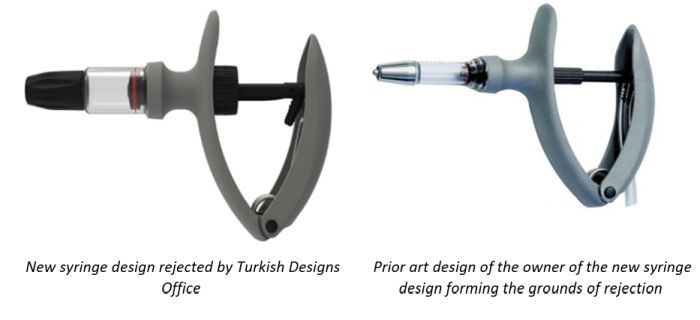Turkish Industrial Property Code No. 6769, which entered into force on January 10, 2017, has laid the foundations for several notable changes concerning intellectual property rights. One of the major changes launched by the Code is the introduction of an ex-officio novelty examination system for designs, allowing TURKPATENT to review the novelty of designs and decide to publish or reject them.
A design, as defined by Article 55 of Code No. 6769, is the appearance of the whole or a part of a product resulting from the features of the line, contour, color, shape, material or texture of the product itself or its ornamentation. Designs that fulfill the criteria of novelty and individual character are to be protected under the said Code, as per Article 56. The latter, inter alia, states that designs differing only in immaterial details are deemed identical.
What are immaterial details?
The concept of immaterial details in design protection is not explicitly defined in Intellectual Property Code No. 6769 or its Implementing Regulations thereof. However, it can be interpreted as "minor and insignificant details possessing minimal or inconsiderable visual value, which are not easily perceived at first glance, and which do not contribute to the visual identity of a design".
Why are immaterial details important?
Rejection of a design on the grounds of being different from a design known from the prior art only in immaterial details has become one of the most common grounds of rejection in novelty examinations carried out by the Designs Office of TURKPATENT.
This is because it can be difficult for examiners to distinguish between immaterial and material details. For example, a slight variation in the shade of color or the size of a feature may seem immaterial to the designer, but it may be considered material by an examiner.
How are immaterial details assessed under Turkish designs law?
Once a design application is filed before TURKPATENT, an Examiner conducts an examination based on search engines (image search) and keyword system to assess the novelty of the designs, thus images and titles/title equivalents of the designs are subject to an internet search. In case designs differing only in immaterial details are detected, the Examiner issues a Search and Examination Report, deciding to reject designs covered under the said application partially or totally and the applicant is allowed a term of two months to appeal the rejection decision of TURKPATENT.
A Case Illustration
The rejection of a new syringe design by the Turkish Designs Office, illustrated under the HSW ECO-MATIC syringe design case exemplifies the ex-officio rejection process. The design was deemed different from a prior art design by the same applicant only in immaterial details, resulting in its rejection. However, a careful assessment of the individual features and the overall impression of each design on the informed user revealed that they differed significantly in unique and essential details, suggesting that these differences were far from immaterial.

A Pioneering Decision
An appeal was filed against the rejection decision, and it was found justified by the Board of Re-Examination and Re-Evaluation of TURKPATENT. In the said decision, it was stated that the applicant of the new syringe design has developed the prior art design, fulfilling the novelty criteria for the protection of the new syringe design under Turkish designs law. The Board's decision further acknowledged that details that may appear non-differentiating at first glance can indeed be of utmost importance. This redefinition of the concept of immaterial details emphasizes that even seemingly minor or immaterial details may be considered unique in the design creation process, contributing not only to novel aesthetic features but also to the designer's signature.
Conclusion
From a design-wise perspective, how an Examiner evaluates the difference between two designs as being immaterial should not be strictly bound by his/her unique assessment, since details which form a relatively small part of a design, which may not be instantly perceived at first sight, may be regarded of utmost importance if evaluated in view of an informed user. Even minor or seemingly immaterial details may be considered as unique in the design creation process, displaying not only novel esthetic features but also the signature of the designer.
The ex-officio novelty examination system should be assessed on the understanding that the concept of immaterial designs is not a constant criterion which can be applied to all design regardless of their specific elements and individual creative processes. A thorough review on novelty should also take into account the unique territory and aesthetic foundation of each design specifically, focus on the question of whether the so-called immaterial details may have any effect on the identity of the design, further taking into consideration the assessment of the informed user in determining whether the immaterial details are novelty-destroying on a design-specific basis. Clear guidelines and a design-specific approach are necessary for a fair and effective ex-officio novelty examination system.
The content of this article is intended to provide a general guide to the subject matter. Specialist advice should be sought about your specific circumstances.

